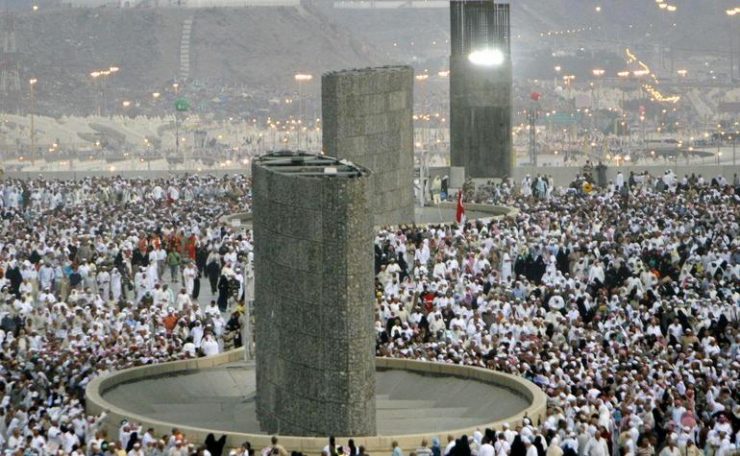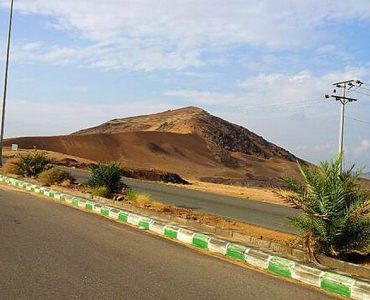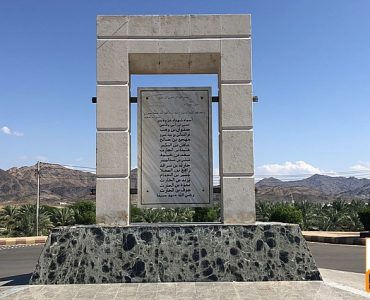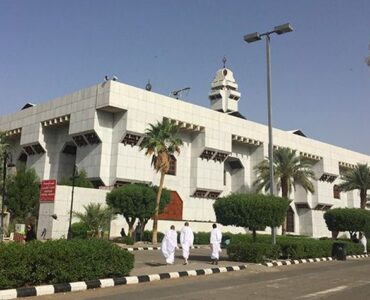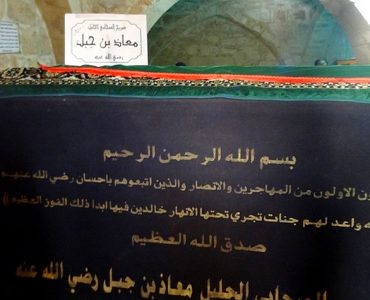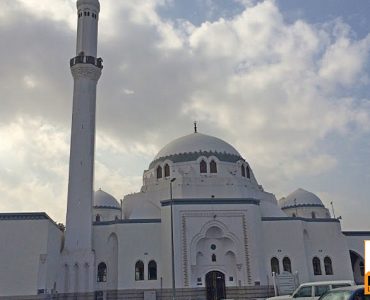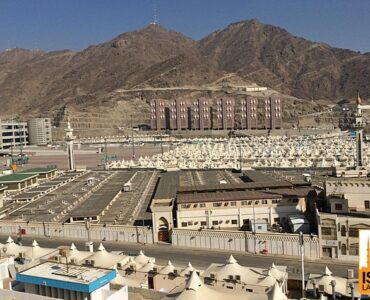The Jamarat (Arabic: الجمرات) are three stone walls, formerly pillars, which are pelted as a compulsory ritual of Hajj in emulation of the actions of the Prophet Ebrahim (عليه السلام). They represent the three locations where Ebrahim (عليه السلام) pelted the Shaytan (Satan) with stones when he tried to dissuade him from sacrificing his son Ismail (عليه السلام). The pillars are called ‘Jamrat-al-Ula’, ‘Jamrat-al-Wusta’ and ‘Jamrat-al-Qubra’.
The actions of Prophet Ebrahim (عليه السلام)
- One of the purposes of the Hajj is to recall, while in Mina, how a 94 year old father brought his eight year old son here for sacrifice. Ebrahim (عليه السلام) had first left his wife and newborn son, Ismail (عليه السلام) in the desert upon Allah’s command. Then while returning after eight years to them he saw a dream wherein a man told him that Allah (ﷻ) wanted him to sacrifice his son. He saw the same dream for three consecutive nights and as he was a Prophet, his dreams were a form of Wahy (Divine Instruction).
- Prophet Ebrahim (عليه السلام) realised that Allah (ﷻ) wanted him to sacrifice his son for whom his heart was overfilled with love and emotions. He went to his wife and asked her to dress up Ismail (عليه السلام). Ismail (عليه السلام) was overjoyed that his father had come after such a long time and was now taking him out for a walk. When Hajra (عليها السلام) asked, “Where are you taking him?” He replied, “To meet a friend.”
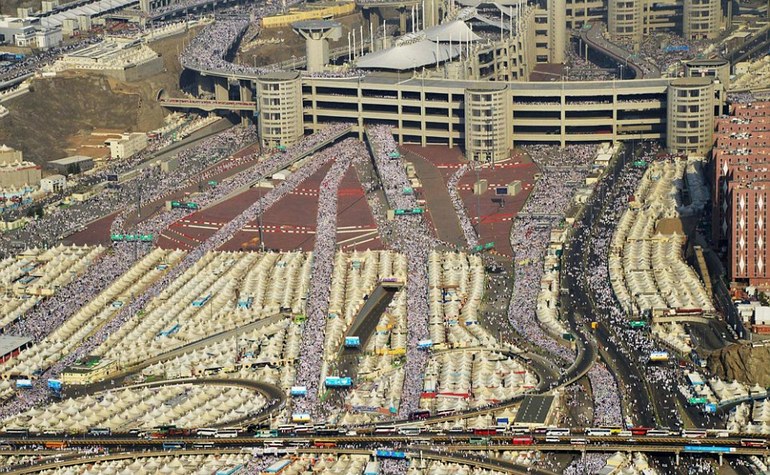

- They then reached Mina. Here Ebrahim (عليه السلام) asked his son that your father has seen such a dream, what is your opinion about it? The reason for asking was not to ask his opinion in deciding whether to go ahead with the command or not. It was to assess whether his son will allow him to follow the command freely or will he have to forcibly carry out this order. In other words, he asked this to test the intensity of love for Allah in his son’s heart. The son replied, “My father, obey the command given by Allah. You will, Insha’Allah, find me steadfast. Give my shirt to my mother as it will be a source of comfort for her and wrap me in your own shirt. Put me face down so you can’t see my face, lest you hesitate in carrying out my slaughter.”
- The skies and the earth witnessed that Ebrahim (عليه السلام) tied his son and laid him down. Now this was very unacceptable to Shaytan so he first went to Hajra (عليها السلام) and asked her, “Do you know where Ebrahim has taken your son?” She replied, “To meet a friend.” He said, “By meet a friend he meant to meet Allah. He is going to sacrifice him!” She said, “How can a father sacrifice his son?” By mistake, Shaytan uttered, “It is Allah’s command.” On hearing this Hajra (عليها السلام) replied, “If this is Allah’s command, then even a hundred Ismails can be sacrificed in this way.”
- Then he went to distract Ebrahim (عليه السلام). When he appeared to him at the first Jamarat, Jibraeel (عليه السلام) said to Ebrahim (عليه السلام): “Pelt him!” so Ebrahim (عليه السلام) threw seven stones at him and he disappeared from him. Then he appeared to him at the second Jamarat. Jibraeel (عليه السلام) said to him: “Pelt him!” so he pelted him with seven stones and he disappeared from him. Then he appeared to him at the third Jamarat. Jibraeel (عليه السلام) again instructed him: “Pelt him!” so he pelted him again with seven small stones and Shaytan withdrew from him. This action is imitated by all Hujjaj, symbolising one’s acknowledgement that Shaytan is one’s enemy and should be repulsed. The action of pelting stones at the Jamarat is known as ‘Rami‘.
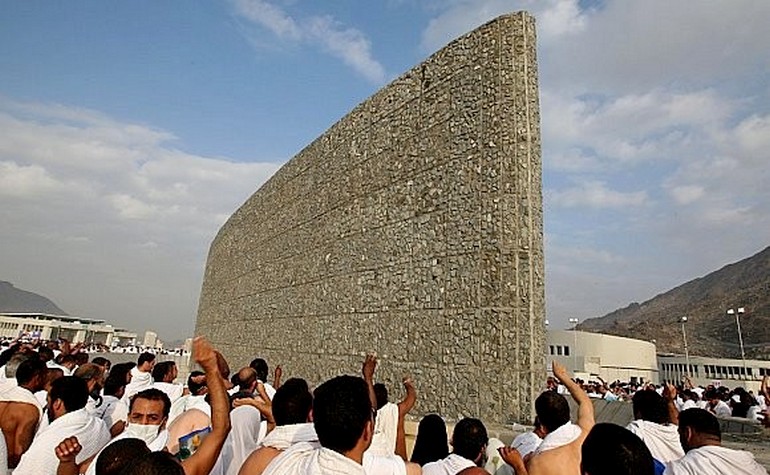

- Ebrahim (عليه السلام) then laid Ismail (عليه السلام) down and put his knee on his neck so that he may not move. Then he faced the sky and called to Almighty Allah that, “Oh Allah! If you did not like the presence of love for Ismail in my heart, I seek your forgiveness.” Then he proclaimed Allah’s name and placed the knife on Ismail’s (عليه السلام) throat. He would rub the knife but it wouldn’t cut, Allah (ﷻ) had taken the quality of cutting away from the knife.
- Allah (ﷻ) was pleased with the sincerity of Ebrahim (عليه السلام) and sent a white, big-eyed sheep with horns in replacement of Ismail (عليه السلام) which Ebrahim (عليه السلام) sacrificed instead. This is the basis for the offering of sacrifice animals by the Hujjaj and by all other Muslims at the time of Eid-ul-Adha.
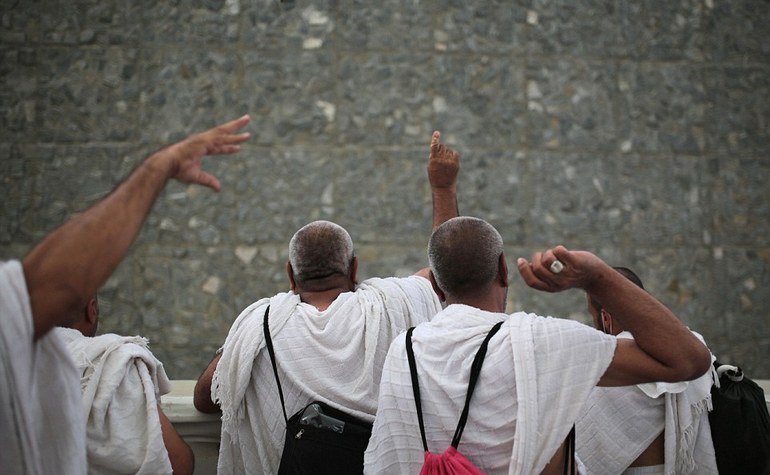

Difference in view with the Jews and Christians
- Note that the views of the Jews and Christians greatly differ from Muslims with regards to who the sacrificial son was and where this incident took place. In order to enhance their prestige and honour they have attributed the sacrificial son to Ishaq (عليه السلام) who is the forefather of the Jews and Christians rather than Ismail (عليه السلام) who is the forefather of the Muslims. They have also placed the setting to be in Jerusalem rather than Mina.
- It is clear, by looking at Biblical scriptural evidence that the sacrificial son could only have been Ismail (عليه السلام). For example, in Genesis 22:2 Abraham is commanded to take his only son for sacrifice. As Ismail (عليه السلام) was 13 years older than Ishaq (عليه السلام) and both were alive at the time of their father’s death, logically Ishaq (عليه السلام) could never be his only son.
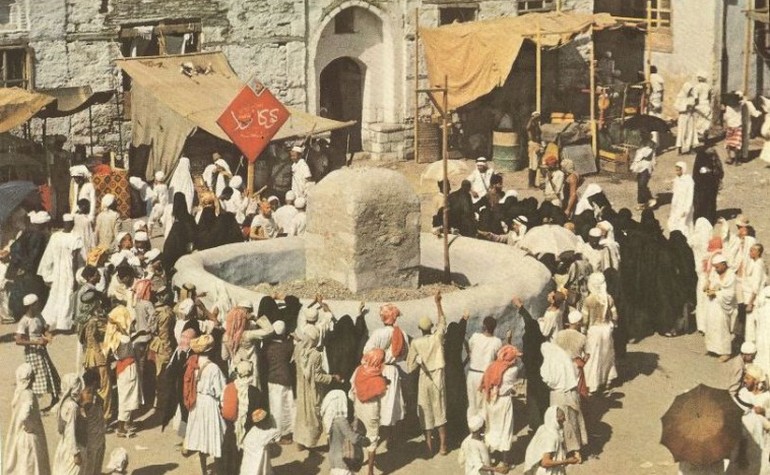

Points of reflection at the Jamarat
- At the point of Pelting the Jamarat, it is not the pillars we attack but the inner effects and tricks of Shaytan. This is the point where we disassociate ourselves from the effects, path and whispers of Shaytan and replace it with the remembrance of Allah and his Messenger (ﷺ).
- It is at this point we make our firm resolution to not turn back to the life of sin when we return home, the point where we exclude Shaytan from our lives.
References: The Intellect – Volume 2, Issue 3, The History of Makkah Mukarramah – Dr. Muhammad Ilyas Abdul Ghani

